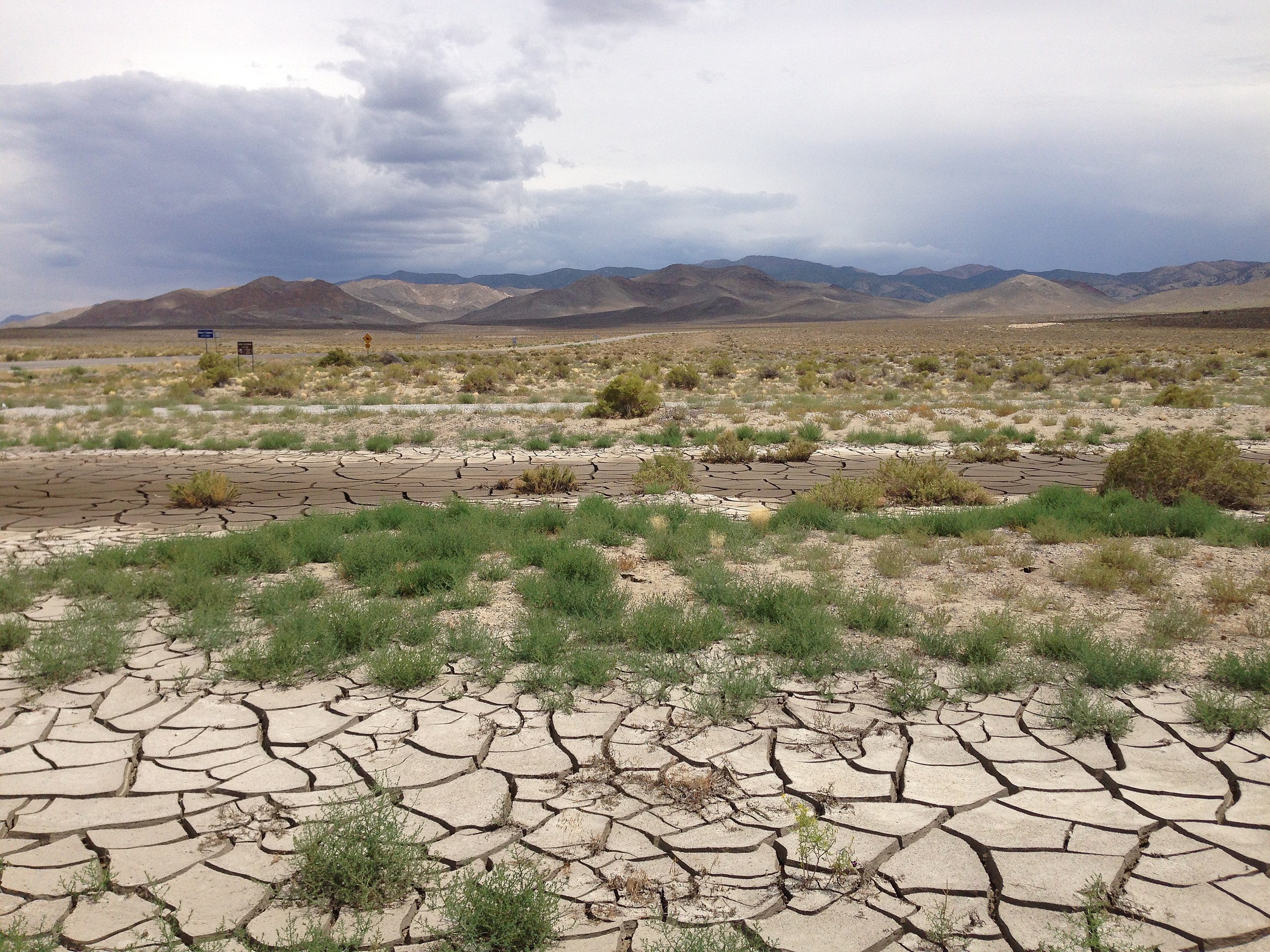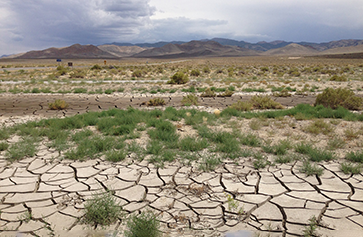Megadrought in southwestern North America is region’s driest in at least 1,200 years

Parched land in Nevada. A UCLA-led research team studied centuries of megadroughts in the region spanning southern Montana to northern Mexico and the Pacific Ocean to the Rocky Mountains. Photo credit: Famartin/Wikimedia Commons
Climate change is a significant factor, UCLA-led research finds
By Anna Novoselov
The drought that has enveloped southwestern North America for the past 22 years is the region’s driest “megadrought” — defined as a drought lasting two decades or longer — since at least the year 800, according to a new UCLA-led study in the journal Nature Climate Change.
Thanks to the region’s high temperatures and low precipitation levels from summer 2020 through summer 2021, the current drought has exceeded the severity of a late-1500s megadrought that previously had been identified as the driest such drought in the 1,200 years that the scientists studied.
UCLA geographer Park Williams, the study’s lead author, said with dry conditions likely to persist, it would take multiple wet years to remediate their effects.
“It’s extremely unlikely that this drought can be ended in one wet year,” he said.
The researchers calculated the intensity of droughts by analyzing tree ring patterns, which provide insights about soil moisture levels each year over long timespans. (They also confirmed their measurements by checking findings against historical climate data.) Periods of severe drought were marked by high degrees of “soil moisture deficit,” a metric that describes how little moisture the soil contains compared to its normal saturation.
Since 2000, the average soil moisture deficit was twice as severe as any drought of the 1900s — and greater than it was during even the driest parts of the most severe megadroughts of the past 12 centuries.
Studying the area from southern Montana to northern Mexico, and from the Pacific Ocean to the Rocky Mountains, researchers discovered that megadroughts occurred repeatedly in the region from 800 to 1600. Williams said the finding suggests that dramatic shifts in dryness and water availability happened in the Southwest prior to the effects of human-caused climate change becoming apparent in the 20th century.
Existing climate models have shown that the current drought would have been dry even without climate change, but not to the same extent. Human-caused climate change is responsible for about 42% of the soil moisture deficit since 2000, the paper found.
One of the primary reasons climate change is causing more severe droughts is that warmer temperatures are increasing evaporation, which dries out soil and vegetation. From 2000 to 2021, temperatures in the region were 0.91 degrees Celsius (about 1.64 degrees Fahrenheit) higher than the average from 1950 to 1999.
“Without climate change, the past 22 years would have probably still been the driest period in 300 years,” Williams said. “But it wouldn’t be holding a candle to the megadroughts of the 1500s, 1200s or 1100s.”
As of Feb. 10, according to the U.S. Drought Monitor, 95% of the Western U.S. was experiencing drought conditions. And in summer 2021, according to the U.S. Bureau of Reclamation, two of the largest reservoirs in North America — Lake Mead and Lake Powell, both on the Colorado River — reached their lowest recorded levels.
Regulators have continued to implement water conservation measures in response to water shortages caused by the drought. In August, for example, federal officials cut water allocations to several southwestern states in response to low water levels in the Colorado River. And in October, California Gov. Gavin Newsom declared a drought emergency and asked Californians to voluntarily decrease their water usage by 15%.
Williams said initiatives like those will help in the short term, but water conservation efforts that extend beyond times of drought will be needed to help ensure people have the water they need as climate change continues to intensify drought conditions.
The study was a collaboration among researchers from UCLA, NASA and the Columbia Climate School.
This article originally appeared in the UCLA Newsroom. For more news and updates from the UCLA College, visit college.ucla.edu.


 Famartin/Wikimedia Commons
Famartin/Wikimedia Commons Michael Studinger/NASA
Michael Studinger/NASA Image credit: UCLA
Image credit: UCLA